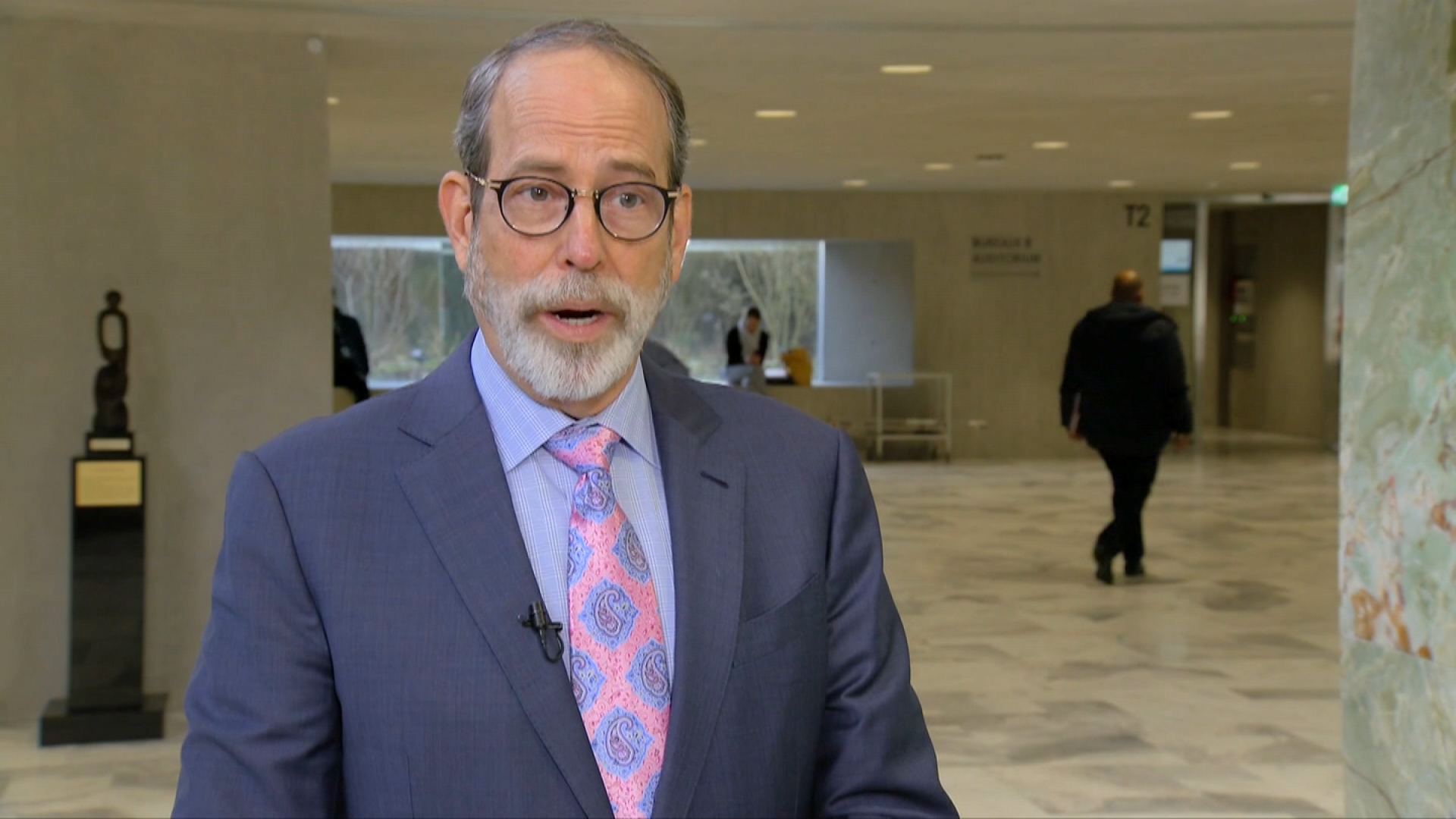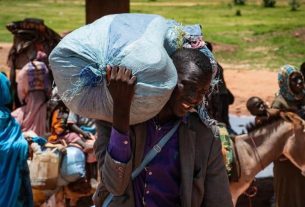|
Getting your Trinity Audio player ready...
|
TRT: 02:45
SOURCE: WHO
RESTRICTIONS: PLEASE CREDIT WHO ON SCREEN
LANGUAGE: ENGLISH / NATS
DATELINE: 01 FEBRUARY 2023, GENEVA, SWITZERLAND / FILE
SHOTLIST:
FILE – GENEVA, SWITZERLAND
1. Wide shot, exterior WHO Headquarters
01 FEBRUARY 2023, GENEVA, SWITZERLAND
2. SOUNDBITE (English) Dr Benjamin O. Anderson, Medical Officer, Cancer Control, World Health Organization (WHO):
“With 2.3 million cases of breast cancer around the globe each year, breast cancer is the most common cancer among women in 86 percent of countries and in 95 percent of countries, it is the first or second leading cause of cancer related deaths. Therefore, it’s timely for WHO to be addressing how to improve breast cancer outcomes at the global level.”
3. Med shot, Dr Anderson being interviewed
4. SOUNDBITE (English) Dr Benjamin O. Anderson, Medical Officer, Cancer Control, World Health Organization (WHO):
“Over 20 countries around the globe, breast cancer mortality has been reduced by 40 percent between 1990 and the present time. The question is how do we apply what we’d learned in low-and-middle-income countries settings? There are three steps, all of which are required. One is adequate early-stage diagnosis. At least 60 percent of the invasive breast cancers need to be early stage. We need timely diagnosis. We need to be able to distinguish who has cancer and who does not in a reasonable period of time so that treatment can be started within three months. And we need to have comprehensive cancer management, that’s surgery, radiotherapy, and drug therapy appropriate to those case taken through to completion. We’re providing a framework through the Global Breast Cancer Initiative an implementation framework that can guide countries in how to do this.”
5. Med shot, Dr Anderson being interviewed
6. SOUNDBITE (English) Dr Benjamin O. Anderson, Medical Officer, Cancer Control, World Health Organization (WHO):
“There’s a common misconception that breast cancer is just a problem in high income countries when it in fact it is a global problem. Low-and-middle-income countries are the least suited for addressing these issues. The young age at which women die from breast cancer means that we have a quarter of a million children who become, who lose their mothers to breast cancer each year. And these are situations we cannot tolerate, and these are situations in which we can make improvements.”
7. Med shot, Dr Anderson being interviewed
8. SOUNDBITE (English) Valerie McCormack, Deputy Branch Head, Environment and Lifestyle Epidemiology, International Agency for Research on Cancer, World Health Organization (WHO):
“Success of WHO Global Breast Cancer Initiative will not only reduce the 700,000 deaths from breast cancer each year, but it will also alleviate the impact of these deaths on families and on societies. Each year, over one quarter of a million children lose their mother due to breast cancer in many vulnerable groups worldwide. Sadly, the death of a mother from cancer is accompanied by financial hardship, leaving the remaining family with worries how to meet the nutritional, developmental and educational needs of children. Together, we can improve breast cancer survival and alleviate the suffering.”
FILE – GENEVA, SWITZERLAND
9. Wide shot, exterior WHO Headquarters
STORYLINE:
The World Health Organization (WHO) released a new Global Breast Cancer Initiative Framework today (3 Feb) providing a roadmap to attain the targets to save 2.5 million lives from breast cancer by 2040.
There are more than 2.3 million cases of breast cancer that occur each year, which make it the most common cancer among adults. In 95 percent of countries, breast cancer is the first or second leading cause of female cancer deaths. Yet, survival from breast cancer is widely inequitable between and within countries; nearly 80 percent of deaths from breast and cervical cancer occur in low- and middle-income countries.
SOUNDBITE (English) Dr Benjamin O. Anderson, Medical Officer, Cancer Control, World Health Organization (WHO):
“With 2.3 million cases of breast cancer around the globe each year, breast cancer is the most common cancer among women in 86 percent of countries and in 95 percent of countries, it is the first or second leading cause of cancer related deaths. Therefore, it’s timely for WHO to be addressing how to improve breast cancer outcomes at the global level.”
In 2017, the World Health Assembly passed the Resolution Cancer prevention and control in the context of an integrated approach. Since 2018, WHO has developed integrated initiatives in women’s and children’s cancers, calling also for the elimination of cervical cancer and a doubling of childhood cancer survival. Taken together, these initiatives can revert the generational harm from cancers and save more than a million lives in the next ten years. WHO calls on governments, development partners, industries, and individuals to take their part to close the care gap and end the generational harms of cancer.
SOUNDBITE (English) Dr Benjamin O. Anderson, Medical Officer, Cancer Control, World Health Organization (WHO):
“Over 20 countries around the globe, breast cancer mortality has been reduced by 40 percent between 1990 and the present time. The question is how do we apply what we’d learned in low-and-middle-income countries settings? There are three steps, all of which are required. One is adequate early-stage diagnosis. At least 60 percent of the invasive breast cancers need to be early stage. We need timely diagnosis. We need to be able to distinguish who has cancer and who does not in a reasonable period of time so that treatment can be started within three months. And we need to have comprehensive cancer management, that’s surgery, radiotherapy, and drug therapy appropriate to those case taken through to completion. We’re providing a framework through the Global Breast Cancer Initiative an implementation framework that can guide countries in how to do this.”
SOUNDBITE (English) Dr Benjamin O. Anderson, Medical Officer, Cancer Control, World Health Organization (WHO):
“There’s a common misconception that breast cancer is just a problem in high income countries when it in fact it is a global problem. Low-and-middle-income countries are the least suited for addressing these issues. The young age at which women die from breast cancer means that we have a quarter of a million children who become, who lose their mothers to breast cancer each year. And these are situations we cannot tolerate, and these are situations in which we can make improvements.”
Cancer in women, including breast cancer leave devastating impact for the next generation. A 2020 study by the International Agency for Research on Cancer suggests that with an estimated 4.4 million women dying of cancer in 2020, nearly 1 million children were orphaned by cancer, 25 percent of which were due to breast cancer. Children who lose their mothers to cancer experience health and educational disadvantages throughout their lives, triggering generational, chronic social disruption and financial harm in many cases.
SOUNDBITE (English) Valerie McCormack, Deputy Branch Head, Environment and Lifestyle Epidemiology, International Agency for Research on Cancer, World Health Organization (WHO):
“Success of WHO Global Breast Cancer Initiative will not only reduce the 700,000 deaths from breast cancer each year, it will also alleviate the impact of these deaths on families and on societies. Each year, over one quarter of a million children lose their mother due to breast cancer in many vulnerable groups worldwide. Sadly, the death of a mother from cancer is accompanied by financial hardship, leaving the remaining family with worries how to meet the nutritional, developmental and educational needs of children. Together, we can improve breast cancer survival and alleviate the suffering.”
The new Framework launched ahead of the World Cancer Day campaign marked tomorrow (4 Feb), recommends to countries to implement the three pillars of health promotion for early detection, timely diagnosis, and comprehensive management of breast cancer to reach the targets.
1. Recommending countries to focus on breast cancer early-detection programmes so that at least 60 percent of the breast cancers are diagnosed and treated as early-stage disease.
2. Diagnosing breast cancer within 60 days of initial presentation can improve breast cancer outcomes. Treatment should start within three months of first presentation.
3. Managing breast cancer so that at least 80 percent of patients complete their recommended treatment.
Accelerating the implementation of WHO’s Global Breast Cancer Initiative has the potential to avert not only millions of avoidable female cancer deaths but also the associated, intergenerational consequences of these deaths.



